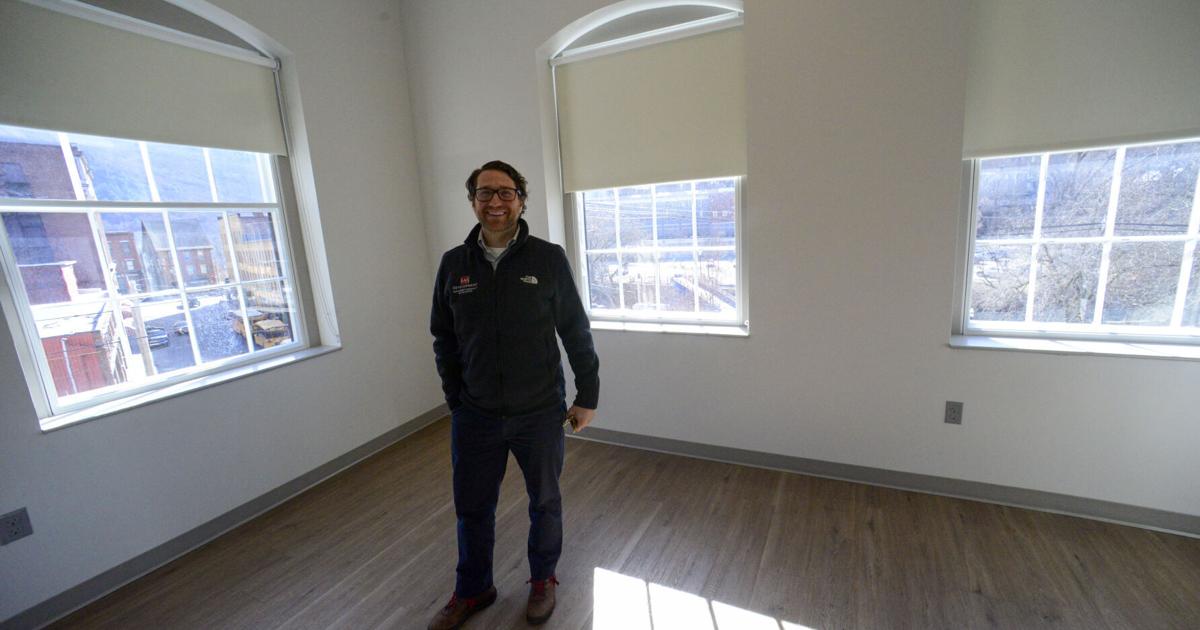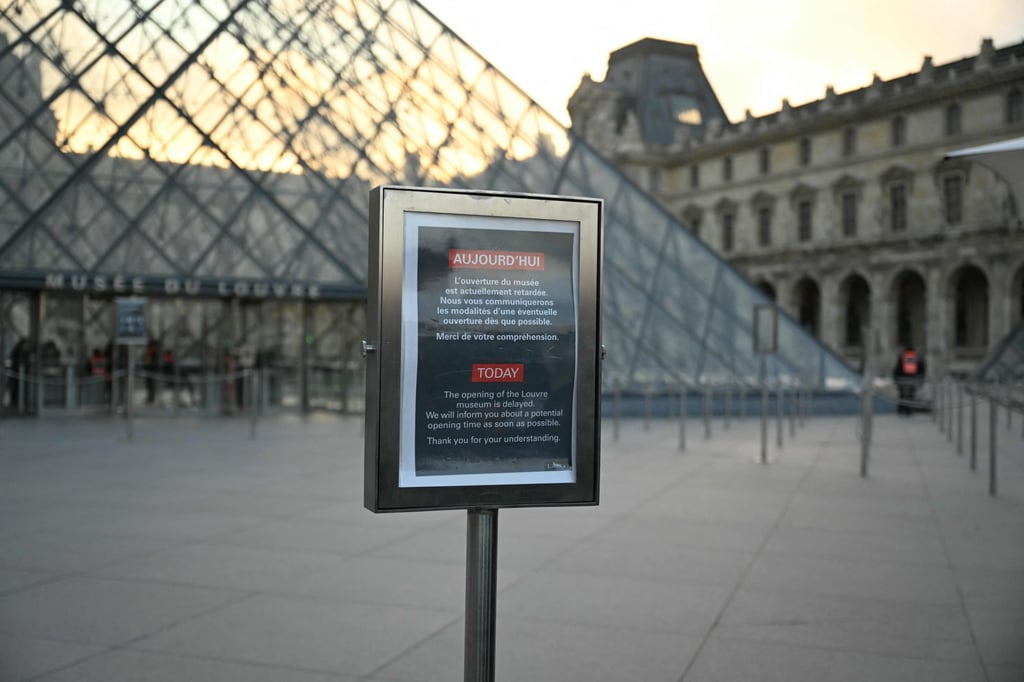
Editor’s note: Today we begin a series of articles analyzing the housing crisis here in Windham County and all over Vermont. The series will be published over the next three days in the print editions of the Reformer and online at reformer.com. Also, read our editorial on the topic.
In 2019, Skye Morse of M&S Development began converting an old grocery warehouse in downtown Brattleboro into 15 apartments and a co-work space.
After four years of planning, construction, and collaboration, the DeWitt Block on Flat Street was opened in 2023 and has been full ever since.
Late last year, M&S announced its next project, hoping to convert buildings on Birge Street into interim housing for international refugees. But that plan is on hold after they were told a $1 million grant to start the process is in limbo and the country’s refugee admission program suspended by the current administration.
“It just feels like an uphill battle,” said Morse, and it’s not just the uncertainty coming out of Washington, D.C. He said housing developers in Vermont also face “an onslaught” of regulations in Vermont that, while intended to protect Vermont’s character and provide housing for all income levels, drives up costs and drives private developers out of Southern Vermont.
“We have a lot of regulations that make our buildings more expensive and we have a lack of labor,” he said.
In Vermont and around the country, the cost of construction per square foot can range between $150 and $400, with costs approaching $675 a square foot in buildings over five stories. Construction costs for subsidized housing with all its financing requirements can cost up to $600 a square foot.
That shakes out to between $65,000 and $280,000 in construction costs per unit in the United States.
A STANDALONE
Joshua Reap, of the Associated Builders and Contractors of New Hampshire and Vermont, said it does cost more to build in the Green Mountain State both because of the regulatory burden and the geography of the state.
“Act 250 is a standalone,” he said. “No other state has anything as burdensome as that. In Vermont, it’s a compounding effect of Act 250, energy standards, and codes more burdensome than in New Hampshire, slightly higher labor rates, and a sales tax on the products they are building with.”
Reap said those factors can add up to 10 percent to the costs of building.
“It’s expensive to build in Vermont, which is why you see more activity from nonprofits taking advantage of grants, tax credits and tax exemptions,” he said.
But those grants, tax credits and exemptions come with conditions, said Morse.
“Every single thing everybody does has to solve every single problem we have, instead of just letting us focus on one set of issues,” he said. “It just causes everything to slow down or to stop. The Dewitt Building is perfect example of being forced to solve all the problems.”
Morse said he considers the Dewitt project a success in providing housing to 15 families. He also said they are adding office space to meet an increased demand.
“However, we face the same challenges that Windham Windsor Housing Trust and the Brattleboro Housing Partnership are facing. We are forced by our funders to house people with unmanaged substance use and mental health challenges. We are expected to be their case managers and we are not equipped to do that.”
Morse is working with legislators and a group of landlords on new legislation to address safety in multi-family housing buildings, but currently landlords have their hands tied when it comes to enforcing no trespassing orders on non-tenants, even if they are breaking the law.
“We cannot trespass anybody from our property without getting every single resident’s signature on the petition,” he said. “A non-resident can come into our building at will. We had hoped that this housing would be a step toward recovery and stability for individuals exiting homelessness and for other vulnerable people. We are finding they are preyed upon by drug dealers and others because we can’t keep them out.”
And while the cost of construction is one obstacle that can be overcome with a creative financing pyramid — which includes Section 8 block grants and tax credits, historical tax credits, and grants from the Northern Border Regional Commission — developers and property managers are not equipped to deal with the results of the requirements for the funding.
“We have fewer tools to protect people when there’s federal funding,” said Morse. “My organization can’t afford to do another project like Dewitt simply because once occupied, the building becomes unmanageable. Even if we could make the numbers work, it would be very difficult for us to move forward with another project without significant changes to how vulnerable individuals and individuals with high need are supported and without significant changes to state laws around our ability to prohibit people in our buildings.”
And while the Birge Street project is on hold for now, M&S is working on another project, developing the Leonard Block on Main Street with 10 new housing units.
“Our focus is on workforce housing,” said Morse. “We are exploring a new model that doesn’t come with all the restrictions we are facing at Dewitt.”
WORKFORCE HOUSING IN N.H.
In nearby Swanzey, N.H., Jack Franks, of Avanru Development Group Ltd., recently finished the Swanzey West Apartments, an 84-unit, workforce housing development on Route 10 and is getting ready to break ground on a 74-unit senior housing development on Route 32 near the Dillant-Hopkins Airport. Franks said Avanru is developing another 650 units around the Granite State.
“The regulatory road in Vermont is much more difficult than in New Hampshire in general,” said Franks. “And my experience in Vermont has been that towns, municipalities and the state have been anti-growth. It’s very difficult to invest in a town when you have to jump through extra hoops.”
Franks said Avanru stabilizes its costs and labor force by doing much of the work offsite and transporting the pieces for assembly.
“Seventy percent of the work is completed prior to being shipped,” he said. “It’s all plug and play. A lot of engineering work goes into this process.”
Also in Swanzey, the John Flatley Company out of Nashua is building four 52-unit buildings and a clubhouse on Route 32 in an area originally set aside for industrial development. The $78 million project is privately funded.
The 208 apartments, ranging from studios to three bedrooms, are being pitched as “market rate” housing. In Swanzey and Keene, studios and apartments are being rented at between $1,600 and $2,400 a month.
Flatley said two factors came into play when he decided to invest private money in a housing development in Swanzey: a large underutilized area originally designated for industrial use and municipal water and sewer.
“The town seemed to be receptive,” he said, adding “I’m still taking a risk.”
Flatley said it can take six to eight years from proposal to full occupancy for a private developer to see a return on their investment in a multifamily housing project, but he’s also created a model that he is repeating in those projects to keep costs predictable.
“We’ve built maybe 35 of these buildings so far,” he said. “We’ve worked out all the kinks and there aren’t many unknowns at this point.”
Flatley, who is hoping to hit a trend of people moving back to rural America, also believes housing can be a “chicken and egg” situation.
“What comes first?” he asked. “Do people move to where they have employment, or do employers come to a place with a population base? I would think the quality of life is better in the rural areas and more businesses would move to those areas if there was decent housing.”
BACK IN VERMONT
While Flatley said he hasn’t looked at Vermont because he’s busy with developments in Massachusetts and New Hampshire, Paul Carroccio, is proposing 43 new residential privately financed units in Manchester Village along Richville Road.
For him, proposing new housing in Manchester is his way of giving back to the communities that have supported him and his family since they moved here when he was 8 years old.
“My dad was on the Winhall Select Board for 20 years,” he said. “I learned from him how to contribute and be positive, but also understand the different walks of like that make this community work.”
Carroccio, with a civil engineering degree, got married, started building around the ski resorts, and started TPW, a real estate brokerage with his wife, Kristie, raising a family along the way.
He said it’s easier to build in New Hampshire because it has a more vital economy and more people, and because it doesn’t have Act 250.
“It’s also heavily commercialized, which Vermont doesn’t want,” he said. “But what do our communities need? It appears to be housing.”
Carroccio said he sees and applauds the work that nonprofits are doing to meet the need, but it’s just not enough.
“It can be done, if you dig into the numbers,” he said. “Private developers just don’t like the challenge of dealing with the process in Vermont.”
DIVERSE HOUSING
In Brattleboro, The Village at Winston Prouty is set to start this year, with the goal of bringing as many as 300 units of what’s being pitched as “diverse housing” to the Winston Prouty Center for Child and Family Development campus off of Maple Street.
The first phase of development includes the demolition of the Wheeler House and the construction of 28 units at an estimated cost of $9.7 million.
Each unit is projected to cost about $342,000, said Chloe Learey, executive director of the Prouty Center, though they are still comparing costs between modular or stick-built construction, with the hope to get shovels in the ground this year.
Her estimate currently includes the hard costs of construction and site work, and the soft costs of architects, consultants and development fees. Not included is Prouty Center staff time spent on the project, which is currently being considered an “in-kind contribution.”
The Prouty Center project received local approval and doesn’t require an Act 250 permit, and they have applied for a stormwater permit.
Learey said money is “the last piece of the puzzle.” Fundraising has been underway and contributions, including from the town, have been made along the way. She said development in Vermont is expensive and requires subsidies, such as low-interest loans or tax abatements.
“I think we actually needed to make a project inevitable,” Learey said. “So we really all understand that this is a crisis. Help us figure out how to pay for it.”






